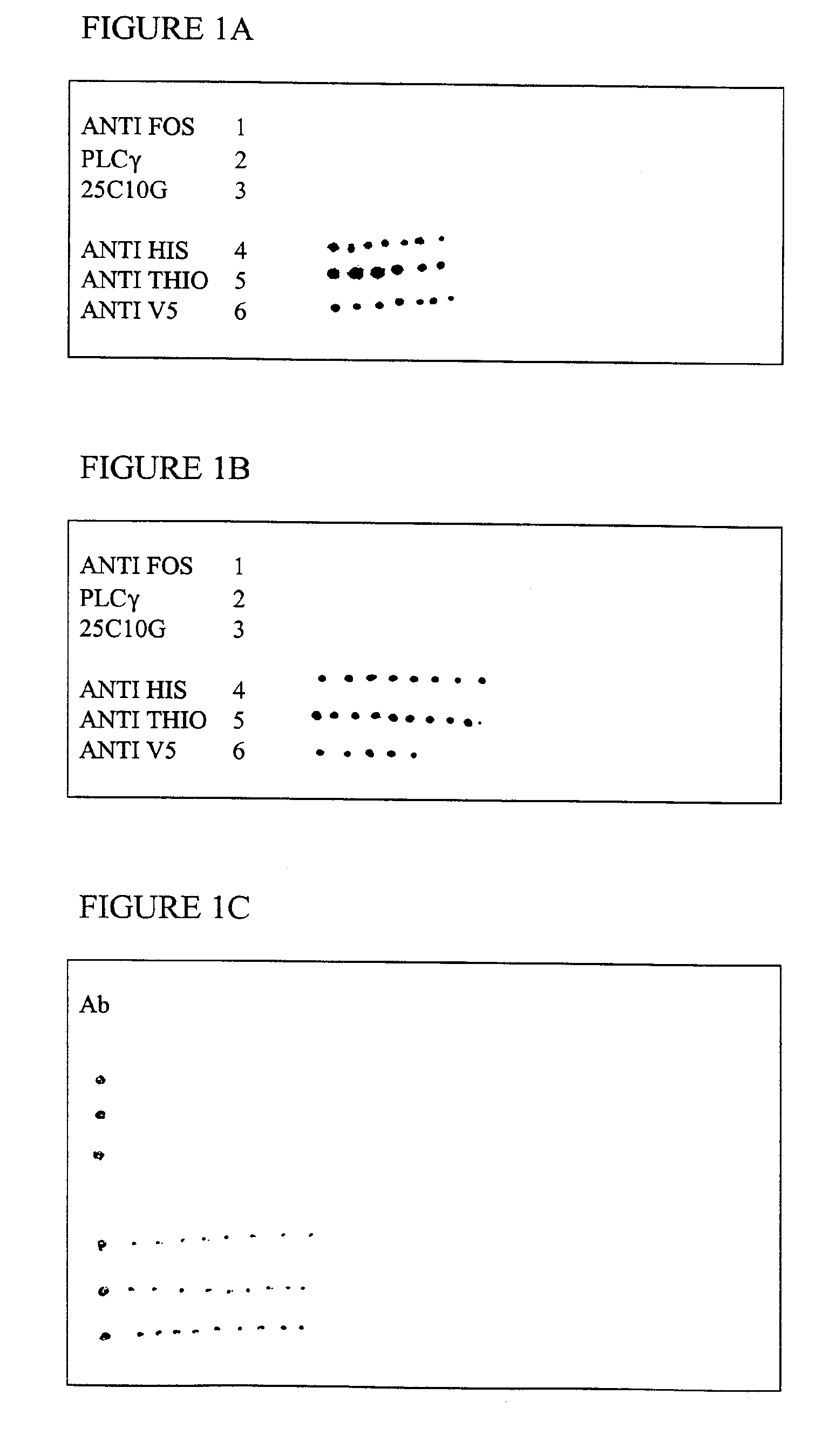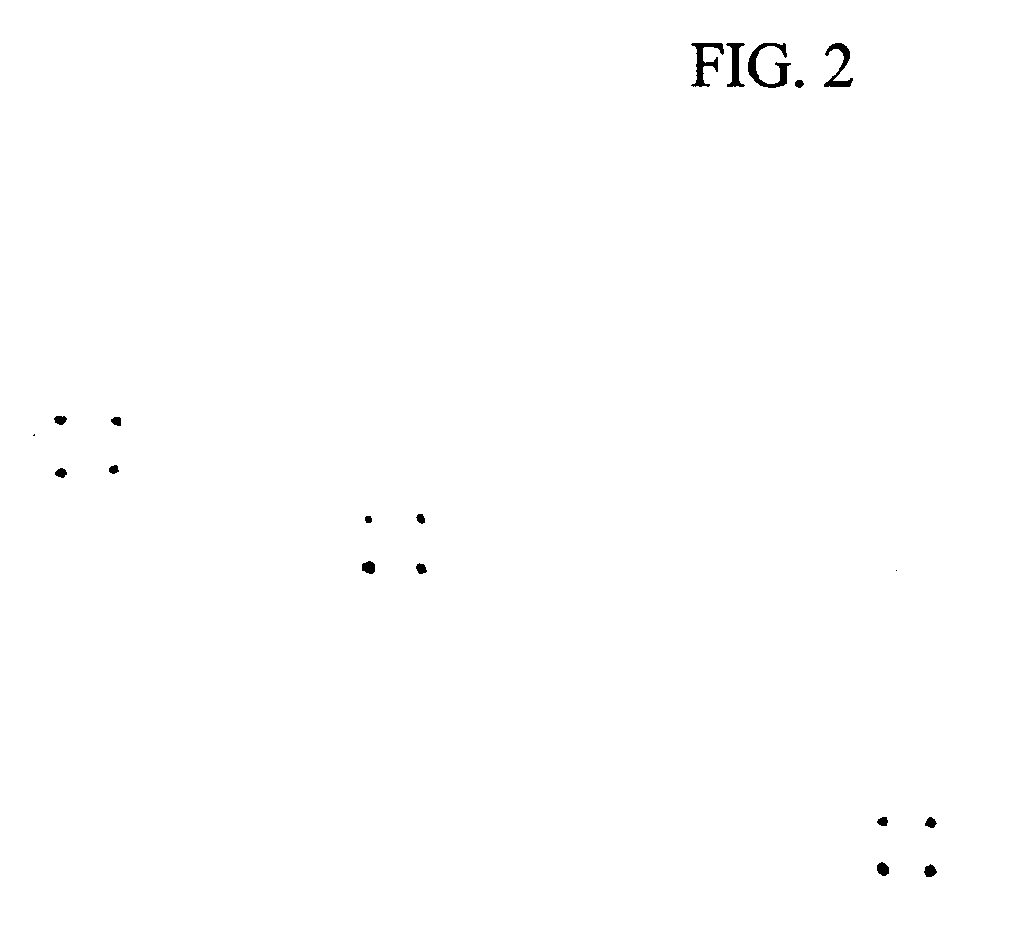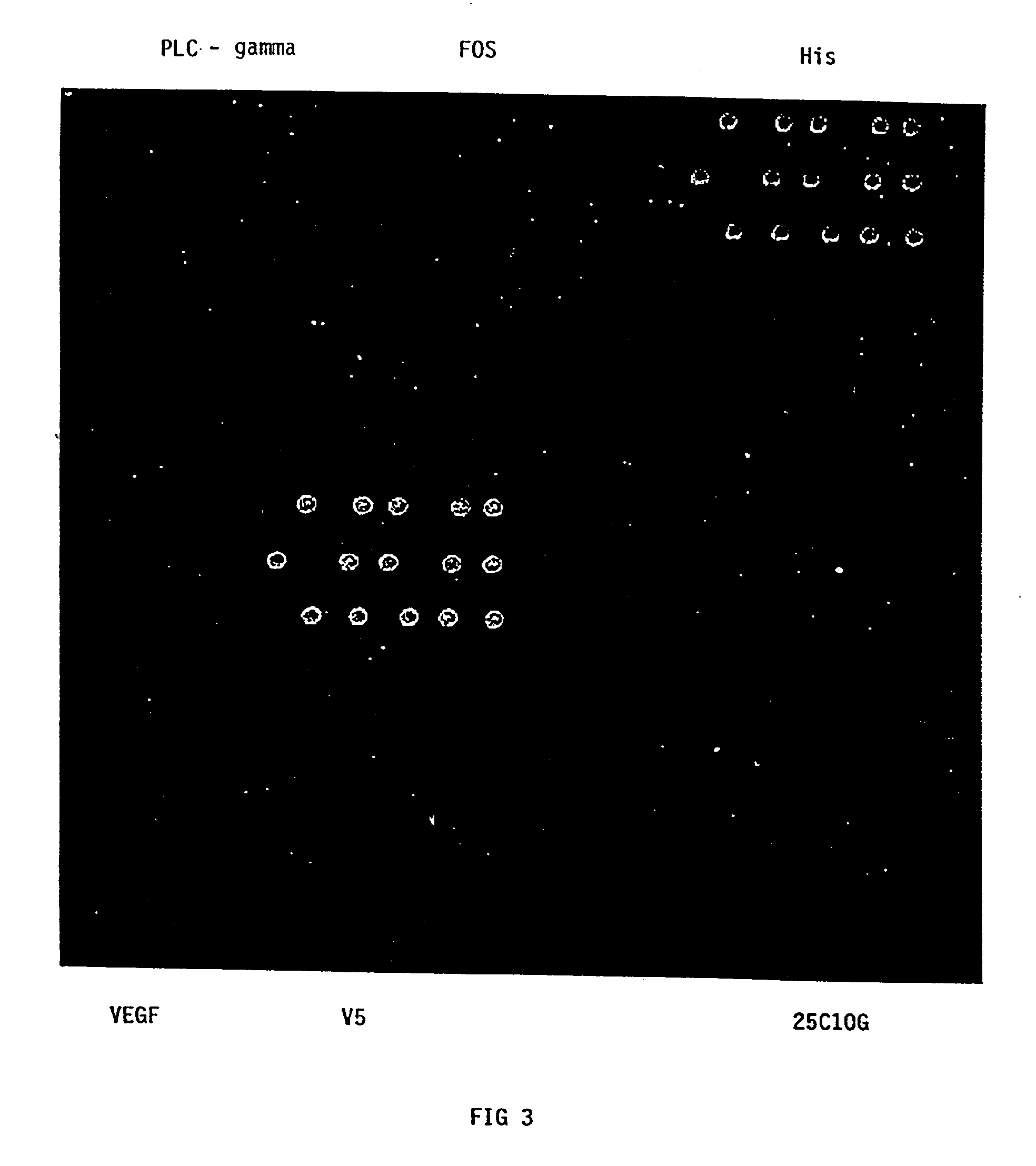Microarrays and uses therefor
a technology applied in the field of microarrays and RNA, can solve the problems of inability to fully realize the benefits of RNA, inability to simultaneously test a large number of unknowns, and laborious methods currently available to identify one with a particular binding specificity, etc., to achieve the effect of simplifying analysis and characterization of genes
- Summary
- Abstract
- Description
- Claims
- Application Information
AI Technical Summary
Benefits of technology
Problems solved by technology
Method used
Image
Examples
example 1
Nucleic Acid Microarrays
[0086]The following procedures are conducted at room temperature and using double distilled water unless otherwise noted. These methods are applicable to arrays of polypeptides or polynucleic acids.
[0087]Glass slides are prepared as follows: NaOH (50 g) is dissolved in 150 ml of double distilled water (ddH2O), then 200 ml of 95% EtOH is added while stirring. If the solution becomes cloudy, ddH2O is added until it becomes clear. Approximately 30 glass slides (Gold Seal, Cat. No. 3010) are soaked in the NaOH / EtOH solution for 2 hours, shaking. The slides are then rinsed three times with ddH2O. The slides are next soaked in a poly-L-lysine solution (70 ml poly-L-lysine (Sigma Cat. No. 8920) to 280 ddH2O) for 1 hour. Excess liquid is removed by spinning the slides in a rack on a microtiter plate carrier at 500 rpm. The slides are dried at 40° C. for 5 minutes, then stored in a closed box for at least 2 weeks prior to use.
[0088]A cDNA microarray is prepared as fol...
example ii
Determination of Optimal Concentrations of Antibody and Antigen
[0099]Various concentrations (1 μg / μl, 100 ng / μl, 10 ng / μl, 1 ng / μl) of total mouse IgG or a mouse monoclonal anti-PLC-gamma were spotted on aldehyde slides (Cel Associates, Inc., Houston, Tex.), which allow non-covalent attachment of proteins. Using a manual 8 pin hand arrayer the slides were blocked for 1 hour with PBST (phosphate buffered saline and 0.10% Tween 20), and 3% milk protein. The slides were subsequently washed three times, 15 minutes each, in PBST. Duplicate slides were incubated with 50 μl of goat anti-mouse IgG antibody (GAMG) conjugated with CY3 or CY5 fluorescent dye compounds (Amersham, Arlington Heights, Ill.) at 10 μg / ml or 1 μg / ml. Slides were then washed for 15 minutes in PBST three additional times and dried by centrifugation prior to scanning. Binding was detected as shown in Table 1 below.
example iii
Comparison of Solid Supports
[0100]Serial dilutions (1 μg / ml, 100 ng / ml, 10 ng / ml, 1 ng / ml) of mouse IgG or PLC-gamma were hand arrayed onto aldehyde, polystyrene, nitrocellulose and Surmodics slides. Aldehyde, nitrocellulose, polystyrene and Surmodics slides were purchased from various outside vendors (aldehyde Slides-Cel Associates, Inc., Houston, Tex.; nitrocellulose Slides -Molecular Probes, Inc., Eugene, Oreg.; polystyrene Slides-Nunc, Inc., Naperville, Ill.; Surmodics Slides-Surmodics, Inc., Eden Prairie, Minn.). Surnodics slides have an undisclosed polymer on the glass surface which forms a covalent linkage with proteins under the appropriate conditions (described by the manufacturer).
[0101]Following hand arraying of the antibodies (approximately 20-30 nanoliters per spot), the nitrocellulose, aldehyde, and polystyrene slides were immediately blocked for 1 hour with PBST and 3% milk, washed 3 times with PBST, and hybridized with 50 μl of GAMG-CY3 for 30 minutes. Surmodics slid...
PUM
 Login to View More
Login to View More Abstract
Description
Claims
Application Information
 Login to View More
Login to View More - R&D
- Intellectual Property
- Life Sciences
- Materials
- Tech Scout
- Unparalleled Data Quality
- Higher Quality Content
- 60% Fewer Hallucinations
Browse by: Latest US Patents, China's latest patents, Technical Efficacy Thesaurus, Application Domain, Technology Topic, Popular Technical Reports.
© 2025 PatSnap. All rights reserved.Legal|Privacy policy|Modern Slavery Act Transparency Statement|Sitemap|About US| Contact US: help@patsnap.com



